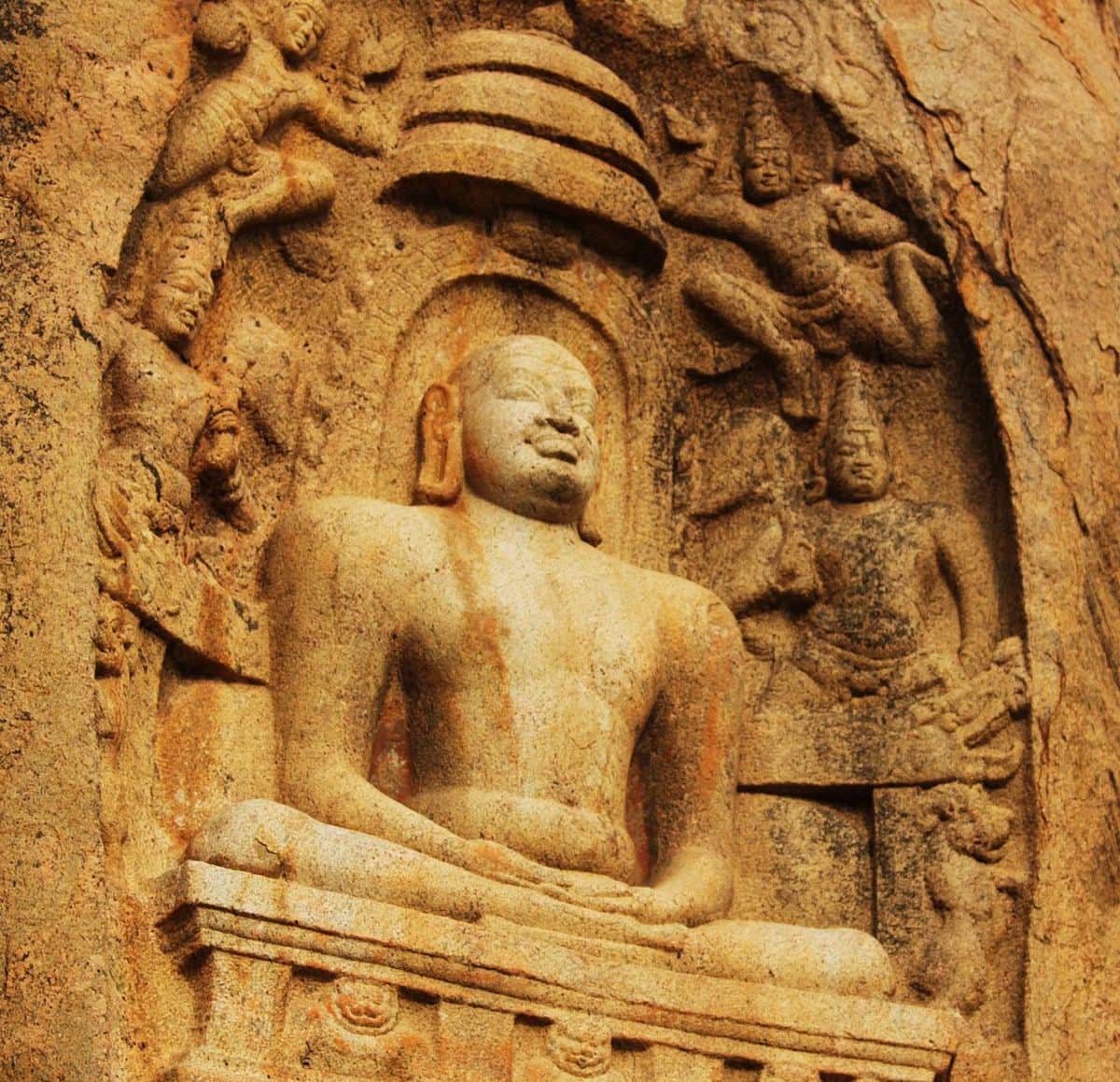Meditation began to develop into actually mainstream across the flip of the millennium—however few persons are conscious of how outdated and broad this artwork actually is, and the way it obtained developed in several elements of the world. On this quick essay, I’ll try to offer a normal map of the historical past of meditation, and its many contemplative traditions.
The knowledge on this article was collected from my years of examine in several traditions. Apart from that, it’s not straightforward to search out this info laid out like this, as every custom tends to focus solely by itself historical past, and provides only one piece of the puzzle.
This essay presents an summary of the historical past of meditation in Buddhism, yoga, Christianity, and different traditions. Towards the tip, additionally, you will discover info on the historical past of meditation within the West.
Understanding the larger image and origins of meditation will will let you uncover which custom or which sort of meditation you wish to discover.
On the finish of this web page you possibly can obtain a free PDF of this text.
Lastly, a part of the fabric right here was additionally printed in my new ebook Sensible Meditation, and is reproduced right here with the permission of Dorling Kindersley Restricted (DK).
If you’re not accustomed to the definition of meditation, please first learn this text on what’s meditation.
1. Cave Yogis and Vedic Sages
The place did meditation come from?
Meditation originated in India, a really very long time in the past. The oldest documented proof of the observe of meditation are wall arts within the Indian subcontinent from roughly 5,000 to three,500 BCE, displaying folks seated in meditative postures with half-closed eyes.
The oldest written point out of meditation is from 1,500 BCE within the Vedas. That’s the time when the Vedas made it to paper, nevertheless it should be understood that the Vedas had been memorized and handed down as an oral custom for hundreds of years, lengthy earlier than they have been lastly written down. In truth, the Brihad Aranyaka Upanishad (f14th century BCE) lists practically 70 generations of meditation gurus and college students that had existed as much as that time.
Throughout this historic time, meditation was a observe for spiritual folks and wandering ascetics, who by way of it sought to transcend the constraints of human life, join with common forces (personified as deities), and union with the transcendental actuality (known as Brahman within the Vedas).
The Hindu custom of meditation consists of each the Yogis meditating in caves, in addition to the Sages (rishis) of the Vedic tradition. It’s the oldest meditation custom on Earth—nonetheless alive and thriving. It has lots of of lineages and strategies.
More than likely the primary meditation approach to be invented/found was both mantra meditation or gazing—althought we will’t know for positive.
The fashionable Yoga motion, which emphasizes postures and respiration workouts, is an adaptation of simply considered one of these lots of of Yogic colleges (the Hatha Yoga faculty). On the whole, Yoga is a knowledge custom whose core is meditation and religious growth—not a system of stretches and respiration practices.
2. The Buddha
Within the sixth century BCE, Siddhartha Gautama deserted his royal life as a prince and got down to attain Enlightenment. On this course of, he realized meditation and philosophy from the most effective Yogis he might discover in his area.
After some time, nonetheless dissatisfied with what he realized, he diverged from that custom and created his personal methodology. He achieved the Enlightenment he sought and have become the Buddha. He then spent the following a long time of his life educating meditation and religious awakening to hundreds of individuals.
Over the following a number of centuries, Buddhism unfold throughout Asia, and many various lineages have been shaped. These days, the Buddhist types of meditation (Vipassana, Samatha, Loving-Kindness and Strolling Meditation) are maybe essentially the most broadly practiced types of meditation within the West.
3. Jainism, Taoism, Confucianism
In the identical “golden century” because the Buddha, three different religions have been born, all with their very own approaches to meditation. They’re:
- Jainism in India (based by Mahavira)
- Taoism in China (based by Lao Tze)
- Confucianism in China (based by Confucius).
Jainism is a really ascetic custom that locations nice emphasis on self-purification, self-discipline, contemplation, and non-violence. The Jain meditation strategies contain mantra repetition, gazing, breath consciousness, visualizations, and self-inquiry.
Taoism emphasizes union with Tao, or cosmic life/nature. You’ll be able to be taught extra about Taoistic meditation right here, and test the chapters on Zuowang and Neiguan in my ebook for step-by-step practices from this custom.
Confucianism focuses extra on morality and group life. Meditation was developed on this custom centuries later, with a concentrate on self-contemplation and self-improvement. It’s known as Jing Zuo.
These traditions are nonetheless alive as we speak, though not as widespread exterior their dwelling international locations as Buddhism and Yoga are.
4. Greek Philosophers
The Greek philosophers, partially underneath the energetic affect of sages and yogis of India, developed their very own model of meditation. Such cultural affect was enhanced by Alexander the Nice’s navy exploits of India (327–325 BCE), which introduced each cultures in contact.
Within the phrases of the scholar George Feuerstein, in his wonderful ebook The Psychology of Yoga:
“Plato and Aristotle, in addition to the historian Herodotus, freely admitted the affect of the Orient upon Greek thought. (…) For the Greeks, the Indian sages exemplified the best virtues of the philosophical life that they themselves sought. The Greeks admired the sages’ obvious immunity to ache and discomfort, in addition to their disinterest in pleasure and what the Greeks noticed as their contempt of loss of life.”
Greek philosophers practiced navel-gazing (omphaloskepsis), as an assist to philosophical contemplation. Afterward, philosophers Philo of Alexandria and Plotinus additionally developed meditation strategies, particularly involving focus.
The affect of Japanese thought and contemplative traditions on the West was lower as soon as Christianity started to dominate Europe—and for a lot of centuries. It was solely within the twentieth century that the dialogue East-West started to flourish once more.
5. Christian Mysticism
Christian mystics developed their very own type of meditation, principally primarily based on the repetition of a non secular phrase or phrase, and the silent contemplation of God.
One type of Christian meditation is known as Jesus Prayer, which was developed between the tenth and 14th centuries in Greece, within the Hesychasm Christian custom. Historians speculate that this group of Christians might need had contact with the Sufis and the Indians, which is the place the affect of meditation might need come from.
One other type is discovered within the Japanese Christian sect, additionally includes repetition of a phrase, and is way older than Hesychasm.
Additional developments of Christian meditation occurred by the work of Benedictine monks, Ignatius of Loyola, Teresa of Avila (sixteenth century), and the Trappist monks.
To be taught extra, take a look at my article on Christian Meditation.
6. Zen Buddhism
Zen is a well-liked faculty of Buddhism based by the Indian/Persian monk Bodhidharma, who within the eighth century traveled to China to show meditation. From that time, his teachings developed into the lineage of Chan in China, being later exported into Korean (Seon), Japan (Zen), and Vietnam (Thien). All of those are recognized collectively as “Zen”. In all of those lineages, there’s a robust affect of Taoism and Chinese language tradition, which partially explains the individuality of Zen in relation to different Buddhist traditions.
These days the numerous varieties of Zazen—which is the meditation strategy of Japanese Zen—are nonetheless widespread types of meditation within the West. Some lineages of Zen additionally emphasize the observe of Koans as a type of meditation.
7. Sufism
The custom of the Sufis (the mystics of Islam) goes so far as 1,400 years again. Sufism, underneath some affect of Indian contemplative traditions, developed meditation practices primarily based on respiration, mantra, and gazing.
The core of their practices is connecting with God (Allah). In addition they developed their iconic Sufi whirling, which could be seen in Turkey even as we speak.
To be taught extra, take a look at my article on Sufi Meditation, and the chapter Sufi Heartbeat Meditation in my ebook.
8. Jewish Meditation
The Jewish esoteric custom of Kabbalah, particularly underneath the affect of Abraham Abulafia (1240–1291) and a few later contemplatives, additionally developed its own forms of meditation. These are principally primarily based on the deep contemplation of philosophical rules, names of God, symbols, prayers, and the Tree of Life.
9. Trendy Western World
Within the 1700s, a number of texts of Japanese philosophy started to be translated into European languages—particularly the Upanishads, Bhagavad Gita, and Buddhist Sutras. By the 18th century, the examine of Buddhism within the West was a subject for intellectuals, with the thinker Schopenhauer being maybe considered one of its most well-known admirers.
Within the US, main figures of the Transcendentalist motion—comparable to Ralph Waldo Emerson and Henry David Thoreau—have been additionally admirers of the beliefs of Japanese philosophy and spirituality.
Yoga and meditation have been launched to the US early within the twentieth century by a yogi known as Swami Vivekananda. His charismatic and rationalist presentation on the Parliament of Religions in Chicago (1893) triggered a giant curiosity in People in Japanese philosophy and spirituality. It was additionally properly obtained by the Transcendentalist motion in the US, particularly by Ralph Waldo Emerson and Henry David Thoreau,
On account of his affect, within the twentieth Century a number of well-known Indian religious academics migrated to the USA, together with: Paramahansa Yogananda (Self-Realization Fellowship), Maharishi Mahesh Yogi (educating Transcendental Meditation) and Swami Rama (Himalayan Institute). Likewise, representatives of a number of colleges of Buddhism made their method to train within the West—the primary ones being Zen, Theravada, and Tibetan Buddhism.
Most of those jap masters had western disciples because the torch-bearer of their teachings. With this, the observe of meditation started to be taught in a extra westernized method, usually simplified and decoupled from its religious context. Scientific research started to emerge, and other people realized that meditation just isn’t solely for individuals who are in search of religious enlightenment.
10. The Period of Meditation and Science
Based on the scholar George Feuerstein, the primary piece of scientific analysis on meditation occurred in 1936, and the primary one utilizing the EEG was in 1955. The primary assortment of scientific research on meditation was made in 1977 by James Funderburk, a pupil of Swami Rama of the Himalayan Worldwide Institute of Yoga Science.
In truth, Swami Rama was one of many first yogis to be studied by Western scientists. Within the Nineteen Sixties he was examined by scientists on the Menninger Clinic, the place he demonstrated his skill to voluntarily management his bodily processes (comparable to heartbeat, blood stress, and physique temperature) which science had up till then thought-about being involuntary.
Amongst different issues, he demonstrated:
- Altering his heartbeat whereas sitting immobile, to 300 beats per minute for 16 seconds, after which inside a couple of minutes utterly stopping his coronary heart from pumping blood for some seconds.
- Producing completely different pores and skin temperatures on adjoining sides of his hand by consciously dilating and contracting his blood vessels together with his thoughts.
- Producing alpha, delta, theta and gamma mind waves on demand.
- Remaining totally aware of his atmosphere whereas his mind was in deep sleep.
[See the book Yogi in the Lab for more details.]
These and different demonstrations triggered curiosity within the scientific group to additional examine the results of meditation within the physique.
In consequence, over the following 5 a long time, the variety of scientific research on meditation elevated significantly, and so did their high quality. Superior practitioners of different traditions, notably Zen monks and Tibetan lamas, have been additionally studied and gave mind-over-body demonstrations.
One other pioneer on this course of was Dr. Herbert Benson, who probed the effectiveness of meditation by way of his analysis at Harvard College within the early Seventies. Earlier than that point, meditation was nonetheless thought-about a non secular observe, and thus not applicable for healthcare functions. Along with his contribution this started to vary.
Meditation As we speak
Now, within the early twenty first century, meditation has develop into mainstream and drastically secularized. Despite the fact that religious meditation continues to exist, it’s the secular strategy to the observe—for its advantages to the physique, thoughts, and wellness—which is the explanation for its ever-increasing reputation.
The place to go from right here?
- Would you like step-by-step guides to check out the strategies of any of those traditions? Take a look at my ebook, Sensible Meditation.
- Do you need to be taught extra concerning the philosophy of those traditions? Take a look at my ebook suggestions.
- Would you like guided meditations to observe alongside any of those strategies? Take a look at my Meditation Library membership.
Historical past of Meditation PDF
Right here is the PDF model of the submit, as promised.
[If you are already part of my mailing list, don’t worry, only one instance of your email will be kept. No duplicate messages will ever be sent].
[Images attribution: Cover (wikimedia.org); Vedic rishis (baps.org); Buddha (buddhist-art.net); Sufi (javanemrooz.com); Thoreau quote (azquotes.com); Swami Rama on the lab (kansasmemory.org/); Lama on the lab (buddhistdoor.net); Meditation today (massagetherapyoga.com)]











